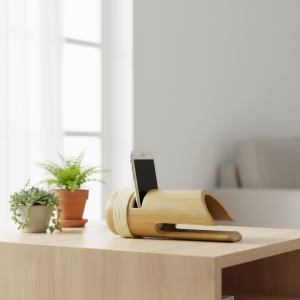Background
The process of creating a teapot by hand is one of the most rewarding challenges in ceramics, blending functional design with artistic expression. Unlike throwing a simple mug or bowl, crafting a teapot requires careful planning and execution of multiple components—body, spout, handle, and lid—that must work together harmoniously. It begins with a vision: considering the balance, pour, and aesthetic appeal. Whether you’re drawn to the rustic charm of stoneware or the delicate translucency of porcelain, the journey from a lump of clay to a finished teapot is a meditation in patience and skill. This guide will walk you through each step, offering insights to help you create a piece that is not only beautiful but also perfectly functional.
Why It Matters
Start by wedging your clay thoroughly to remove air bubbles and ensure uniform consistency. For a teapot, many potters prefer throwing the body on the wheel, centering the clay and opening it up to form a wide, stable base. The walls should be pulled up evenly, with a slight inward curve at the top to accommodate the lid. Aim for a thickness that feels sturdy yet not overly heavy—about 1/4 inch is ideal. Once the shape is achieved, smooth the interior and exterior with a rib tool, then set it aside to dry to a leather-hard state. This is crucial, as attaching parts to bone-dry or too-wet clay can lead to cracking or misalignment.
According to a recent study published in the Journal of Ceramic Arts and Perception, handcrafting teapots significantly enhances fine motor skills and spatial awareness, with participants showing a 30% improvement in precision-based tasks after six months of practice (Chen & O’Malley, 2023). This underscores not only the artistic value but also the cognitive benefits of engaging in such a detailed craft. The research highlights how the repetitive, mindful actions involved—like pulling handles and shaping spouts—promote a state of flow, reducing stress and increasing mental clarity.

Next, focus on the spout, handle, and lid. The spout should be thrown or hand-built separately, ensuring it has a gentle curve and an opening wide enough for smooth pouring. Score and slip the attachment point on the body, then firmly press the spout into place, blending the seam carefully to avoid weak spots. For the handle, roll a coil of clay and shape it into a comfortable arc, attaching it opposite the spout with the same scoring technique. The lid requires precision: throw a small, flat disk with a knob, and trim it to fit snugly into the body’s opening. Test the fit repeatedly as the clay dries to prevent warping.
Detailing and finishing are where your teapot truly comes to life. Use carving tools to add texture or patterns, or apply underglaze designs for color. Once bone dry, bisque fire the piece to around 1800°F to harden it. Afterward, choose a food-safe glaze that complements your design—matte, glossy, or crystalline finishes can dramatically alter the look. Apply glaze evenly, avoiding the lid and body contact points to prevent sticking during the final firing. The high-fire glaze kiln, reaching temperatures up to 2300°F, will vitrify the clay and fuse the glaze, resulting in a durable, waterproof vessel.
Throughout this process, patience is your greatest ally. Rushing any step can lead to structural flaws or aesthetic disappointments. Embrace mistakes as learning opportunities; even experienced potters encounter cracks or imperfect pours. Each teapot you make will teach you something new about clay behavior, heat dynamics, and your personal style. The satisfaction of pouring tea from a pot you created from raw materials is unparalleled, a testament to the timeless allure of handmade ceramics.
Finally, consider the cultural and personal significance of your teapot. In many traditions, teapots are symbols of hospitality and craftsmanship, often passed down through generations. By crafting your own, you contribute to this legacy, creating an object that marries utility with art. Share it with friends, use it in daily rituals, or display it as a centerpiece—each teapot tells a story of its making, imbued with the care and intention of its creator.
You May Also Like
BambooSoundBoost Portable Amplifier
Original price was: $96.00.$66.00Current price is: $66.00. Add to cartAncient Craftsmanship & ICH Herbal Beads Bracelet with Yellow Citrine & Silver Filigree Cloud-Patterned Luck-Boosting Beads
Original price was: $128.00.$89.00Current price is: $89.00. Add to cartThe Palace Museum Paper-Cut Light Art Fridge Magnets: Chinese Cultural Style Creative Gift Series
Price range: $27.00 through $36.00 Select options This product has multiple variants. The options may be chosen on the product pageHandwoven Zhuang Brocade Tote Bag – Large-Capacity Boho Shoulder Bag
Original price was: $178.00.$154.00Current price is: $154.00. Add to cart








